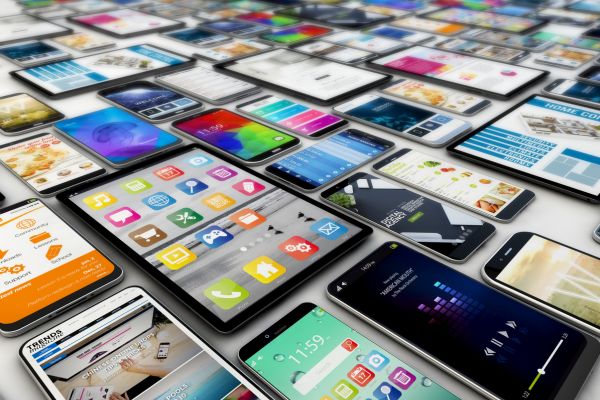Communication is the cornerstone of human interaction. From the ancient days of smoke signals to today’s instant messaging, the technologies used to communicate have drastically evolved. But how exactly do these technologies shape our daily lives, businesses, and global connections? Let’s dive into the fascinating world of communication technology and see how it continues to bring us closer.
The Evolution of Communication Technology
Humanity’s journey to mastering communication has been nothing short of revolutionary. Here’s a quick timeline of how technologies used to communicate have advanced over the years:
- Smoke Signals and Drum Beats
Ancient communities used natural tools like fire and sound to send messages over long distances. Although primitive, these methods laid the groundwork for innovation. - Written Communication
The invention of writing systems like cuneiform and hieroglyphics enabled record-keeping and storytelling. This was the first major leap in preserving and sharing information. - The Printing Press
Enter Gutenberg’s printing press in the 15th century—arguably one of the most pivotal technologies in communication. Mass production of books and pamphlets made knowledge accessible like never before. - The Telegraph and Telephone
Fast-forward to the 19th century, when the telegraph revolutionized long-distance communication. Then came Alexander Graham Bell’s telephone, making instant voice communication a reality. - The Internet Era
The 20th century introduced the internet, email, and mobile phones. Suddenly, the world shrank, and connectivity soared. The rise of social media in the 21st century further transformed communication into a dynamic, interactive experience.
Modern Technologies Used to Communicate
Today, we’re spoiled for choice when it comes to communication tools. From instant messaging apps to virtual reality (VR), here’s a look at the most impactful technologies used to communicate:
1. Smartphones
- Why They Matter: Smartphones combine several technologies—phone calls, text messaging, internet access, and apps—into a single device.
- Key Features:
- Video calling (e.g., FaceTime, Zoom)
- Social media platforms (e.g., Facebook, Instagram)
- Messaging apps (e.g., WhatsApp, iMessage)
2. Email
- The Backbone of Business: Despite newer tools, email remains a critical medium for formal communication.
- Benefits:
- Fast and reliable
- Works across devices and platforms
- Essential for professional and academic environments
3. Social Media Platforms
- Examples: Twitter, LinkedIn, TikTok
- Why They Stand Out: Social media allows individuals and businesses to connect globally, share ideas, and create communities.
4. Video Conferencing Tools
- Popular Options: Zoom, Microsoft Teams, Google Meet
- Game-Changer: These tools transformed remote work, education, and healthcare during the pandemic. They enable real-time collaboration regardless of location.
5. Chatbots and AI Communication
- Rising Trend: Businesses use AI-powered chatbots for customer service and engagement.
- Examples: ChatGPT (like yours truly), Siri, and Alexa.
6. Virtual and Augmented Reality (VR/AR)
- Immersive Communication: VR and AR are used in gaming, training, and even virtual meetings.
- Examples: Meta’s Horizon Workrooms, AR filters on Snapchat.
Advantages of Communication Technologies
1. Speed and Efficiency
Modern tools make it possible to share messages instantly, no matter the distance. Gone are the days of waiting weeks for a letter to arrive.
2. Accessibility
Technologies like smartphones and social media bring communication to the fingertips of billions worldwide, bridging gaps across cultures and geographies.
3. Improved Collaboration
Teams can now work together seamlessly, even when spread across different time zones. Video calls, cloud-based tools, and instant messaging streamline collaboration.
Challenges of Modern Communication Technologies
No system is perfect, right? While the technologies used to communicate have their perks, they’re not without their pitfalls.
1. Digital Overload
The constant influx of notifications and messages can lead to burnout and reduced productivity.
2. Privacy Concerns
With increased connectivity comes the risk of data breaches and misuse of personal information.
3. Over-Reliance on Technology
What happens when the internet goes down? Our dependence on technology means that outages can disrupt everything from work to personal communication.
How to Choose the Right Communication Tool
Picking the right tool depends on your needs. Here’s a handy guide:
| Purpose | Recommended Technology |
| Personal communication | Messaging apps, social media |
| Professional collaboration | Email, video conferencing |
| Creative projects | AR/VR platforms |
| Customer engagement | Chatbots, social media |
FAQs About Technologies Used to Communicate
- What are the main technologies used to communicate today?
The most popular ones include smartphones, social media platforms, email, video conferencing tools, and AI-powered chatbots. - How has communication technology impacted businesses?
It’s improved collaboration, streamlined customer service, and allowed businesses to reach global audiences. - What are the risks of using modern communication technologies?
Privacy concerns, digital overload, and over-reliance on technology are some of the main risks. - Can traditional communication methods still be effective?
Absolutely! Face-to-face communication, handwritten letters, and even phone calls still have their charm and effectiveness in specific contexts. - How do VR and AR technologies enhance communication?
They provide immersive experiences, making virtual meetings, training, and events more engaging and interactive.
Conclusion: The Future of Communication Technology
The technologies used to communicate have evolved from basic tools to sophisticated systems that shape how we live, work, and connect. As innovations like AI, VR, and AR continue to emerge, the future promises even more seamless, immersive communication experiences. However, striking a balance between convenience and mindful use will be key to ensuring these tools serve humanity without overwhelming it.
Authoritative Links for Further Reading:
- www.history.com/technology/communication
- www.bbc.com/future/communication-evolution
- www.forbes.com/communication-technologies



